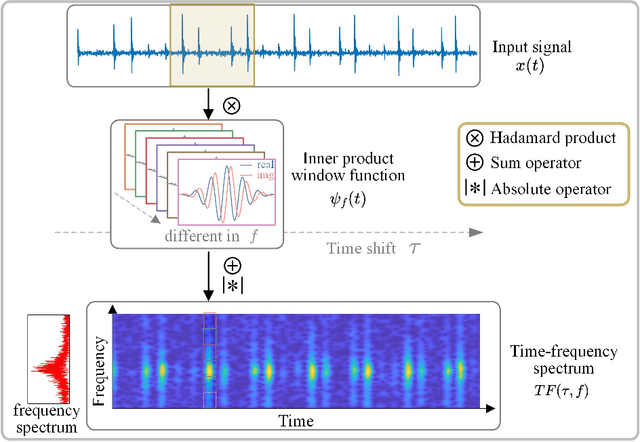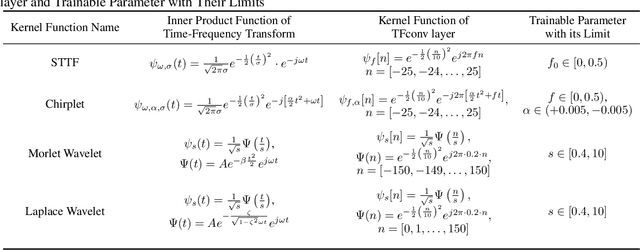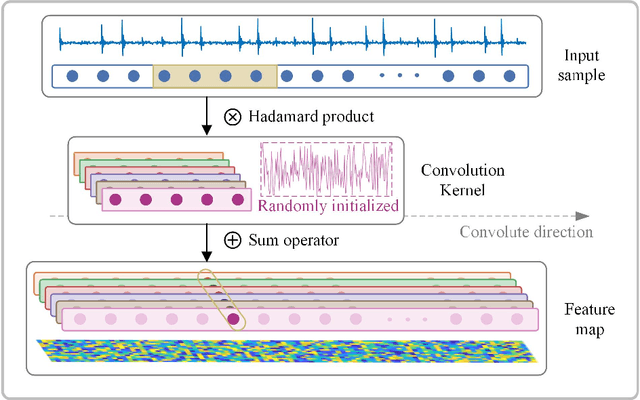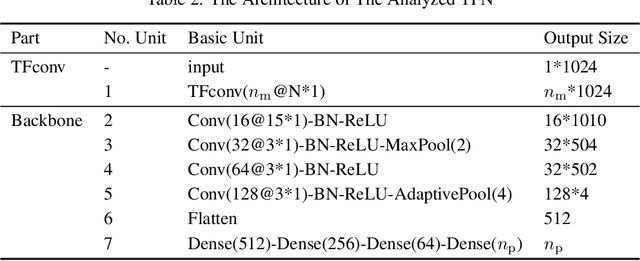Xingjian Dong
CS-SHAP: Extending SHAP to Cyclic-Spectral Domain for Better Interpretability of Intelligent Fault Diagnosis
Feb 10, 2025Abstract:Neural networks (NNs), with their powerful nonlinear mapping and end-to-end capabilities, are widely applied in mechanical intelligent fault diagnosis (IFD). However, as typical black-box models, they pose challenges in understanding their decision basis and logic, limiting their deployment in high-reliability scenarios. Hence, various methods have been proposed to enhance the interpretability of IFD. Among these, post-hoc approaches can provide explanations without changing model architecture, preserving its flexibility and scalability. However, existing post-hoc methods often suffer from limitations in explanation forms. They either require preprocessing that disrupts the end-to-end nature or overlook fault mechanisms, leading to suboptimal explanations. To address these issues, we derived the cyclic-spectral (CS) transform and proposed the CS-SHAP by extending Shapley additive explanations (SHAP) to the CS domain. CS-SHAP can evaluate contributions from both carrier and modulation frequencies, aligning more closely with fault mechanisms and delivering clearer and more accurate explanations. Three datasets are utilized to validate the superior interpretability of CS-SHAP, ensuring its correctness, reproducibility, and practical performance. With open-source code and outstanding interpretability, CS-SHAP has the potential to be widely adopted and become the post-hoc interpretability benchmark in IFD, even in other classification tasks. The code is available on https://github.com/ChenQian0618/CS-SHAP.
Out-of-Distribution Detection through Soft Clustering with Non-Negative Kernel Regression
Jul 18, 2024Abstract:As language models become more general purpose, increased attention needs to be paid to detecting out-of-distribution (OOD) instances, i.e., those not belonging to any of the distributions seen during training. Existing methods for detecting OOD data are computationally complex and storage-intensive. We propose a novel soft clustering approach for OOD detection based on non-negative kernel regression. Our approach greatly reduces computational and space complexities (up to 11x improvement in inference time and 87% reduction in storage requirements) and outperforms existing approaches by up to 4 AUROC points on four different benchmarks. We also introduce an entropy-constrained version of our algorithm, which leads to further reductions in storage requirements (up to 97% lower than comparable approaches) while retaining competitive performance. Our soft clustering approach for OOD detection highlights its potential for detecting tail-end phenomena in extreme-scale data settings.
Interpreting What Typical Fault Signals Look Like via Prototype-matching
Mar 11, 2024Abstract:Neural networks, with powerful nonlinear mapping and classification capabilities, are widely applied in mechanical fault diagnosis to ensure safety. However, being typical black-box models, their application is limited in high-reliability-required scenarios. To understand the classification logic and explain what typical fault signals look like, the prototype matching network (PMN) is proposed by combining the human-inherent prototype-matching with autoencoder (AE). The PMN matches AE-extracted feature with each prototype and selects the most similar prototype as the prediction result. It has three interpreting paths on classification logic, fault prototypes, and matching contributions. Conventional diagnosis and domain generalization experiments demonstrate its competitive diagnostic performance and distinguished advantages in representation learning. Besides, the learned typical fault signals (i.e., sample-level prototypes) showcase the ability for denoising and extracting subtle key features that experts find challenging to capture. This ability broadens human understanding and provides a promising solution from interpretability research to AI-for-Science.
TFN: An Interpretable Neural Network with Time-Frequency Transform Embedded for Intelligent Fault Diagnosis
Sep 05, 2022



Abstract:Convolutional Neural Networks (CNNs) are widely used in fault diagnosis of mechanical systems due to their powerful feature extraction and classification capabilities. However, the CNN is a typical black-box model, and the mechanism of CNN's decision-making are not clear, which limits its application in high-reliability-required fault diagnosis scenarios. To tackle this issue, we propose a novel interpretable neural network termed as Time-Frequency Network (TFN), where the physically meaningful time-frequency transform (TFT) method is embedded into the traditional convolutional layer as an adaptive preprocessing layer. This preprocessing layer named as time-frequency convolutional (TFconv) layer, is constrained by a well-designed kernel function to extract fault-related time-frequency information. It not only improves the diagnostic performance but also reveals the logical foundation of the CNN prediction in the frequency domain. Different TFT methods correspond to different kernel functions of the TFconv layer. In this study, four typical TFT methods are considered to formulate the TFNs and their effectiveness and interpretability are proved through three mechanical fault diagnosis experiments. Experimental results also show that the proposed TFconv layer can be easily generalized to other CNNs with different depths. The code of TFN is available on https://github.com/ChenQian0618/TFN.
 Add to Chrome
Add to Chrome Add to Firefox
Add to Firefox Add to Edge
Add to Edge